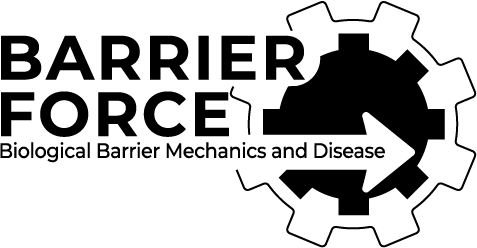Diseases caused by Leishmania and Trypanosoma parasites are a major health problem in tropical countries. Because of their complex life cycle involving both vertebrate and insect hosts, and >1 billion years of evolutionarily distance, the cell biology of trypanosomatid parasites exhibits pronounced differences to animal cells. For example, the actin…
CoE-publications
Focal adhesions contain three specialized actin nanoscale layers
Focal adhesions (FAs) connect inner workings of cell to the extracellular matrix to control cell adhesion, migration and mechanosensing. Previous studies demonstrated that FAs contain three vertical layers, which connect extracellular matrix to the cytoskeleton. By using super-resolution iPALM microscopy, we identify two additional nanoscale layers within FAs, specified by…
Molecular basis of JAK2 activation in erythropoietin receptor and pathogenic JAK2 signaling
Janus kinase 2 (JAK2) mediates type I/II cytokine receptor signaling, but JAK2 is also activated by somatic mutations that cause hematological malignancies by mechanisms that are still incompletely understood. Quantitative superresolution microscopy (qSMLM) showed that erythropoietin receptor (EpoR) exists as monomers and dimerizes upon Epo stimulation or through the predominant…
Comparison of trastuzumab emtansine, trastuzumab deruxtecan, and disitamab vedotin in a multiresistant HER2-positive breast cancer lung metastasis model
Full text links full text provider logo Actions Share Page navigation Title & authors Abstract Conflict of interest statement Figures References Publication types MeSH terms Substances Related information LinkOut – more resources Comparative Study Clin Exp Metastasis . 2024 Apr;41(2):91-102. doi: 10.1007/s10585-024-10278-2. Epub 2024 Feb 17. Comparison of trastuzumab emtansine,…
Mechanical forces across compartments coordinate cell shape and fate transitions to generate tissue architecture
Morphogenesis and cell state transitions must be coordinated in time and space to produce a functional tissue. An excellent paradigm to understand the coupling of these processes is mammalian hair follicle development, which is initiated by the formation of an epithelial invagination—termed placode—that coincides with the emergence of a designated…
Exposure to Aldehyde Cherry e-Liquid Flavoring and Its Vaping Byproduct Disrupt Pulmonary Surfactant Biophysical Function
Over the past decade, there has been a significant rise in the use of vaping devices, particularly among adolescents, raising concerns for effects on respiratory health. Pressingly, many recent vaping-related lung injuries are unexplained by current knowledge, and the overall implications of vaping for respiratory health are poorly understood. This…
DLL4/Notch3/WNT5B axis mediates bidirectional prometastatic crosstalk between melanoma and lymphatic endothelial cells
Despite strong indications that interactions between melanoma and lymphatic vessels actively promote melanoma progression, the molecular mechanisms are not yet completely understood. To characterize molecular factors of this crosstalk, we established human primary lymphatic endothelial cell (LEC) cocultures with human melanoma cell lines. Here, we show that coculture with melanoma…
Recessive TMOD1 mutation causes childhood cardiomyopathy
Familial cardiomyopathy in pediatric stages is a poorly understood presentation of heart disease in children that is attributed to pathogenic mutations. Through exome sequencing, we report a homozygous variant in tropomodulin 1 (TMOD1; c.565C>T, p.R189W) in three individuals from two unrelated families with childhood-onset dilated and restrictive cardiomyopathy. To decipher…
Dynamic Micropatterning Reveals Substrate-Dependent Differences in the Geometric Control of Cell Polarization and Migration
Cells are highly dynamic and adopt variable shapes and sizes. These variations are biologically important but challenging to investigate in a spatiotemporally controlled manner. Micropatterning, confining cells on microfabricated substrates with defined geometries and molecular compositions, is a powerful tool for controlling cell shape and interactions. However, conventional binary micropatterns…
